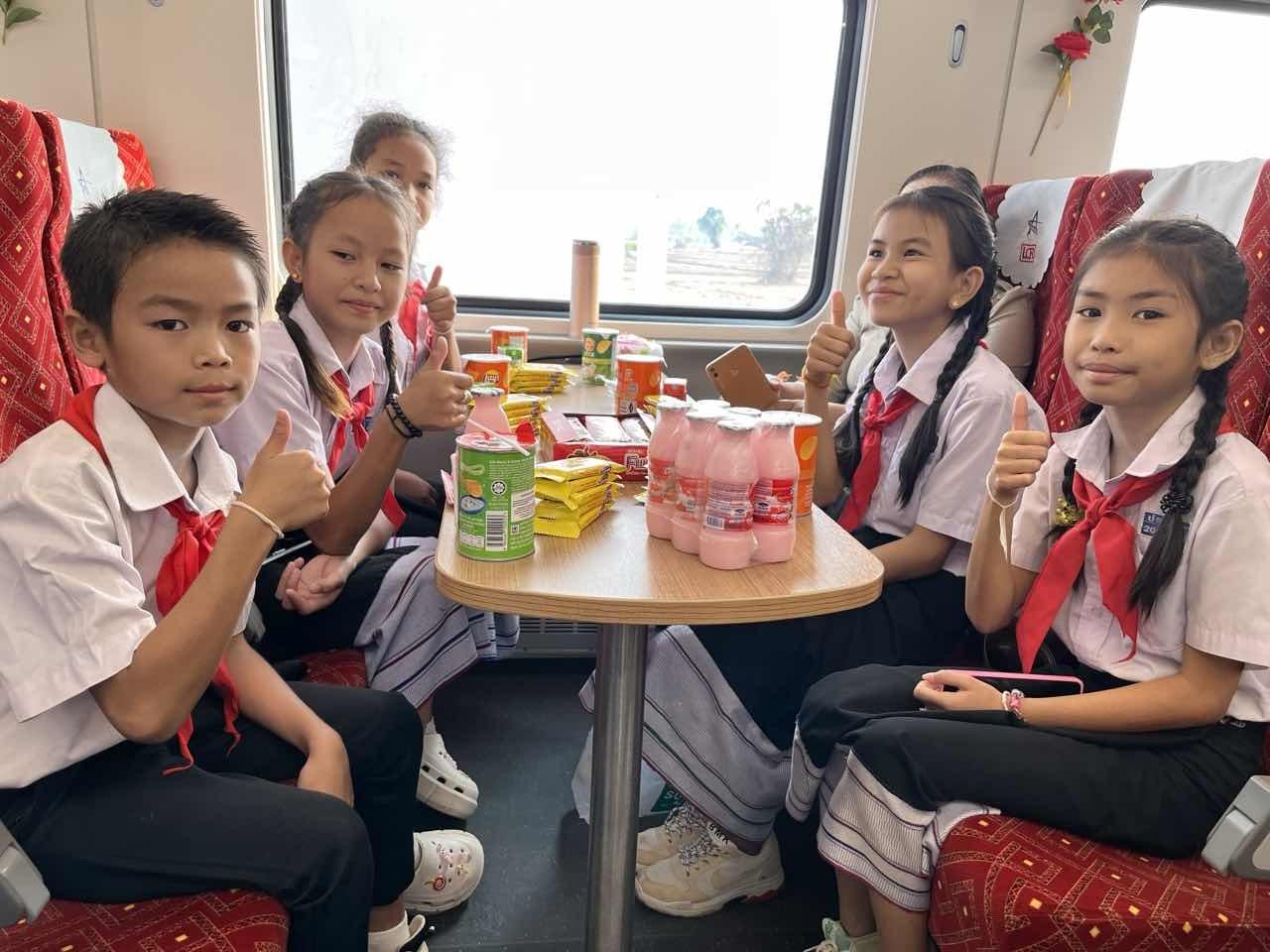 Laotian primary students ride the bullet train on the China-Laos Railway during a field trip in April. (LUO WANGSHU / CHINA DAILY)
Laotian primary students ride the bullet train on the China-Laos Railway during a field trip in April. (LUO WANGSHU / CHINA DAILY)
Darling Phoutthachack got up very early on April 17. The 10-year-old was excited to meet his schoolmates at the station in Vientiane, capital of Laos, and begin an adventure on the China-Laos Railway.
"It is my first time riding a train. It is clean, convenient and beautiful … I really like it," the fourth grader said.
Darling, along with several schoolmates, took a ride from Vientiane to Luang Prabang, a popular tourist destination. The trip took about two hours.
On board, the children sang, ate snacks, chatted and laughed. They asked the conductors and teachers many questions, and the cabin was full of joy.
They were from the China-Laos Friendship Nongping Primary School, a primary school with a history of 50 years, and the journey was a school field trip.
The school, located on Vientiane's outskirts, is an old facility, and it was once in poor condition with dilapidated facilities. In 2013, the school constructed a new main building with funding from the China Foundation for Peace and Development. Since then, China has sent volunteer teachers to the establishment and provided teaching supplies and other aid.
"The school is seen as a symbol of China-Laos friendship," said Bounmi Vilaiysan, who was the principal for more than 30 years. The 61-year-old has a deep affection for the school and China.
"I am very grateful for China's assistance, which means that our students can have a better classroom and learning environment," she said.
Vilaiysan visited China in 2017 when she attended the first Belt and Road Forum for International Cooperation in Beijing. She said that she has seen growing cooperation and friendship between China and Laos over the past six years.
"The BRI makes our lives easier and better in many aspects, such as the improved transportation system," she said.
She has taken the train from Vientiane to Vang Vieng, and also used it to travel between Vientiane and Luang Prabang. "It was convenient, clean and saved a lot of time," she said.
The 1,035-kilometer China-Laos Railway is an electrified line that links Kunming, capital of Southwestern China's Yunnan province with Vientiane, capital of Laos.
It started operations in December 2021, and opened a cross-border passenger service in April, with bullet trains running in both directions.
The railway has cut the journey time between Kunming and Vientiane to 10 1/2 hours. It stretches 422.4 km within Laos, linking the northern border city of Boten with Luang Prabang, Vang Vieng and other cities, including the capital.
Before the railway opened, Laos had a 3.5-km railway along its border with Thailand, which transported cargo.
As a result, most local people see the China-Laos service as the first railway in their country, and it is an exciting new experience to ride the train. Darling and his schoolmates certainly felt that way.
He knew that the railway was built with China's assistance and he could name two Chinese cities — Beijing and Kunming.
He and his peers are learning Chinese at school. They said they were not advanced enough to speak Mandarin, but they would keep learning.
The school field trip visited Luang Prabang Railway Station's maintenance and management center.
With unblinking eyes, Darling watched the local technicians carefully carrying out their duties.
"I want to do logistics-related work when I grow up, to make my country's transportation network more convenient," he said.
He is an example of the assistance and big dreams brought about by the BRI.
This year marks the 10th anniversary of the BRI, and the third Belt and Road Forum for International Cooperation was held in Beijing from Oct 17 to 18.
The initiative was proposed by China but belongs to the whole world, according to a recently released white paper by the State Council Information Office of China, which introduces and summarizes the work and influence of the BRI in recent years.
In the case of Darling and his schoolmates, the BRI has benefited them by not only providing a better learning environment, but also offering opportunities for them to experience such modern infrastructure and have bigger dreams.
Wang Yujie contributed to this story.


